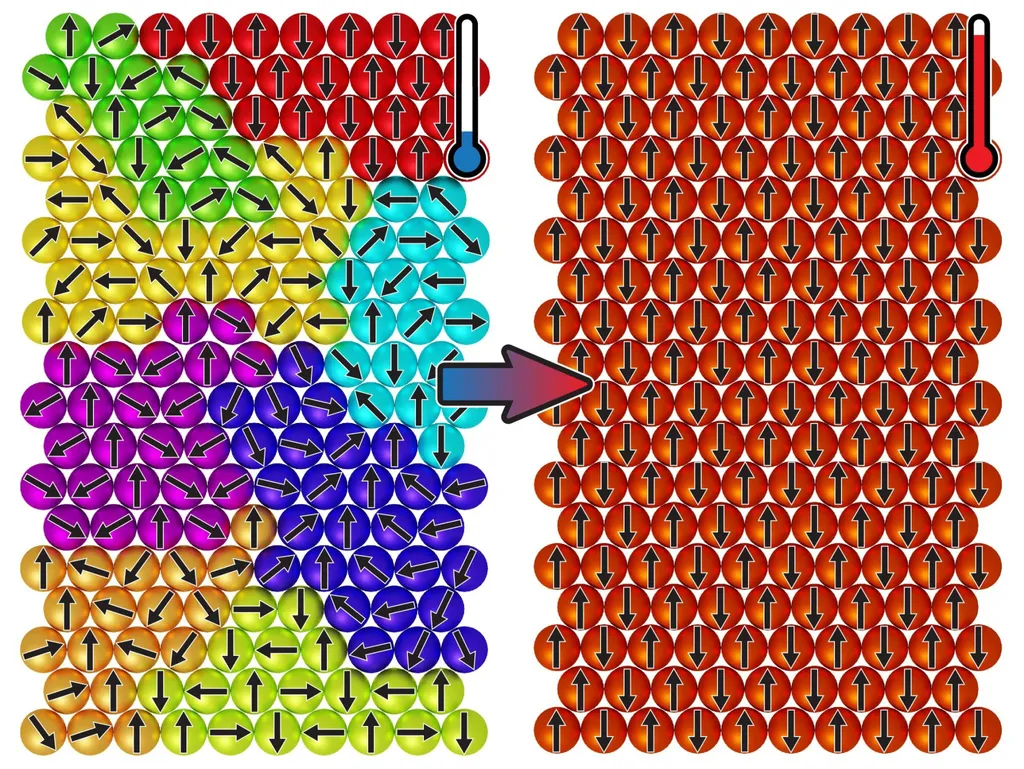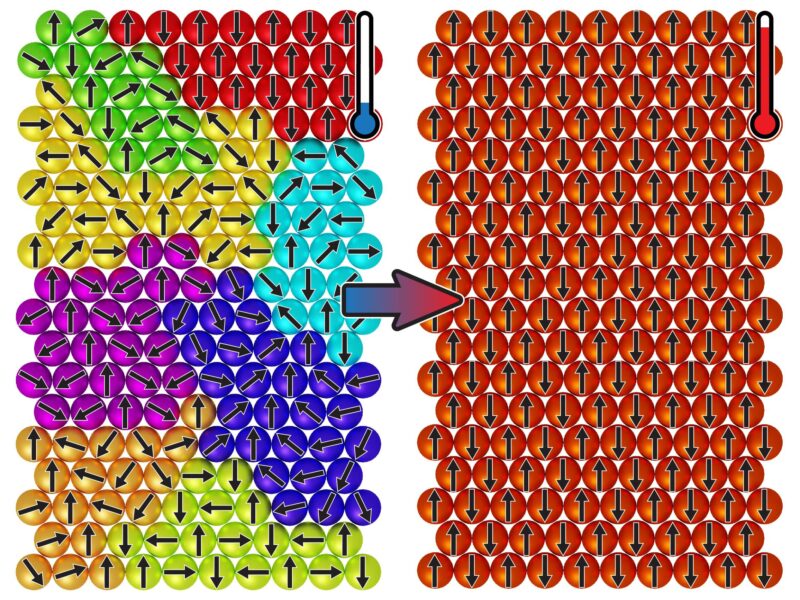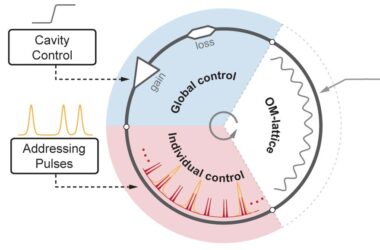
À des températures plus basses, les spins du matériau forment des motifs aléatoires, où chaque motif tourbillonne comme une hélice avec une torsion particulière. En chauffant le matériau, les spins choisissent l’un des modèles d’hélice particuliers, un phénomène qui se produit normalement lorsque la température diminue dans les matériaux magnétiques. Crédit : Université Radboud
Les physiciens ont observé un nouveau type de comportement très étrange dans un matériau magnétique lorsqu’il est chauffé. Lorsque la température augmente, les spins magnétiques se “figent” en un motif statique, un phénomène qui se produit normalement lorsque la température diminue. Leurs résultats ont été publiés dans Nature Physics today, July 4th.
The scientists discovered the phenomenon in the material neodymium, an element that they described as a “self-induced spin glass” several years ago. Spin glasses are typically alloys where iron atoms for example are randomly dispersed into a grid of copper atoms. Each iron atom behaves like a small magnet, or a spin. These randomly placed spins point in all different directions.
“It’s quite counterintuitive, like water that becomes an ice cube when it’s heated up.” — Alexander Khajetoorians
Neodymium is not like conventional spin glasses, where there is random mixing of magnetic materials. It is an element and without significant amounts of any other material, shows glassy behavior in its crystalline form. The spins form patterns that whirl like a helix, and this whirling is random and constantly changes.
Solid pattern when heated
In this new study, the physicists discovered that when they heated neodymium up from -268 °C to -265 °C (-450 °F to -445 °F), the spins ‘freeze’ into a solid pattern forming a type of magnet, at the higher temperature. When cooling down the material, the random whirling helix patterns came back. “This ‘freezing’ of the pattern does not normally occur in magnetic material,” says Alexander Khajetoorians, professor of scanning probe microscopy at Radboud University.
Temperature increases the energy in a solid, liquid, or gas. The same holds true for a magnet: with more temperature, spins start to shake. “The magnetic behavior in neodymium that we observed is actually the opposite of what “normally” happens. It’s quite counterintuitive, like water that becomes an ice cube when it’s heated up,” says Khajetoorians.
These kinds of phenomena are not found often in nature. There are very few materials known that behave in the wrong way. Another well-known example is the Rochelle salt, where charges build up and form an ordered pattern at a higher temperature, where at a lower temperature they are randomly distributed.
How it works
The complex theoretical description of spin glasses was the subject of the Nobel Prize in Physics awarded to Parisi in 2021. Figuring out how these spin glasses work also has importance for other scientific fields. If we ultimately can model how these materials behave, this could also be extrapolated to the behavior of a wide range of other materials.
The underlying odd behavior was linked to the concept of degeneracy: where many different states have the same energy, and the system becomes frustrated. The effect of temperature is to break this predicament: certain states survive, allowing the system to clearly settle into one pattern. We may also be able to harness this behavior toward new types of information storage or computational concepts, like brain-like computing.
Reference: “Thermally induced magnetic order from glassiness in elemental neodymium” by Benjamin Verlhac, Lorena Niggli, Anders Bergman, Umut Kamber, Andrey Bagrov, Diana Iusan, Lars Nordström, Mikhail I. Katsnelson, Daniel Wegner, Olle Eriksson and Alexander A. Khajetoorians, 4 July 2022, Nature Physics.
DOI: 10.1038/s41567-022-01633-9



